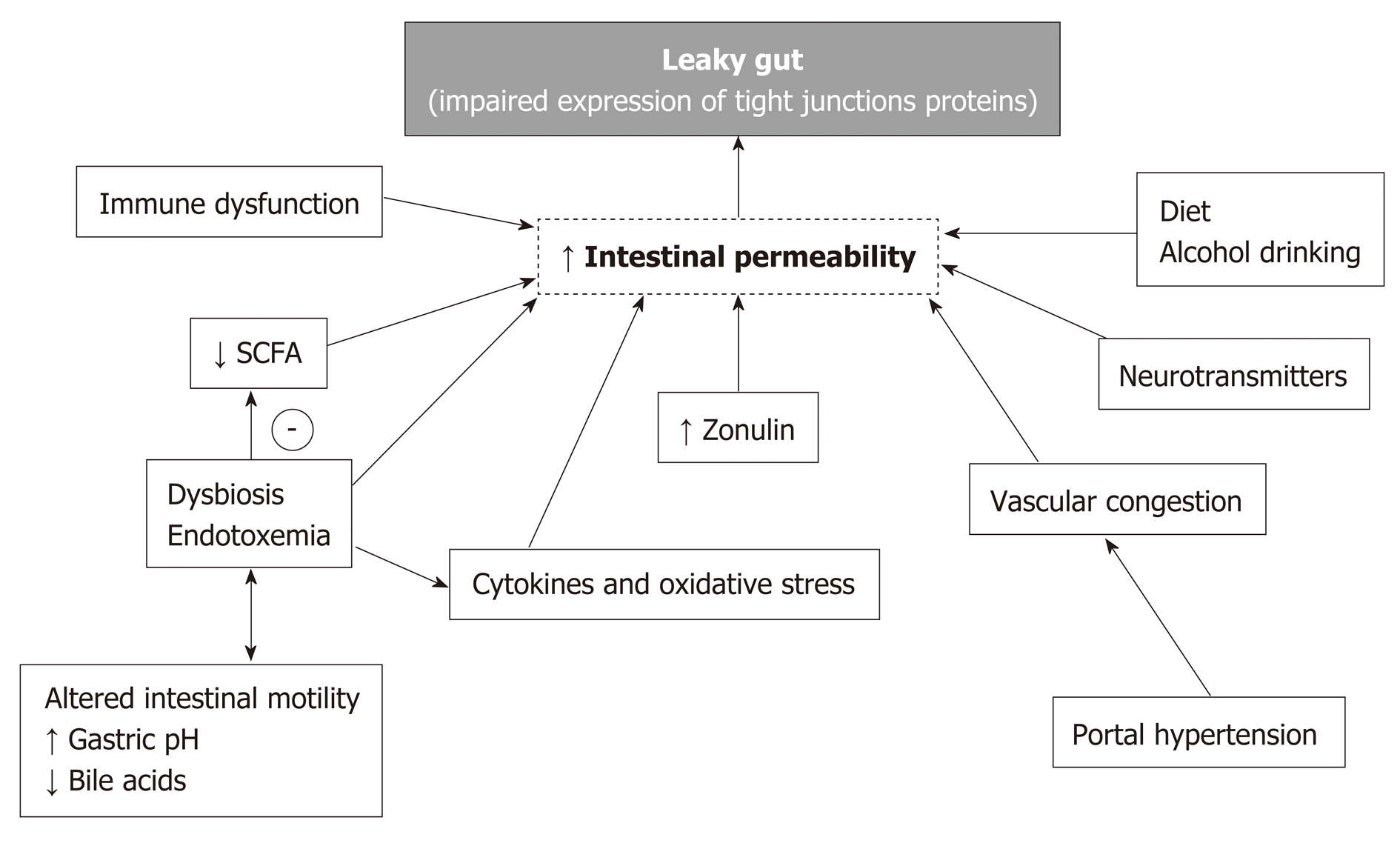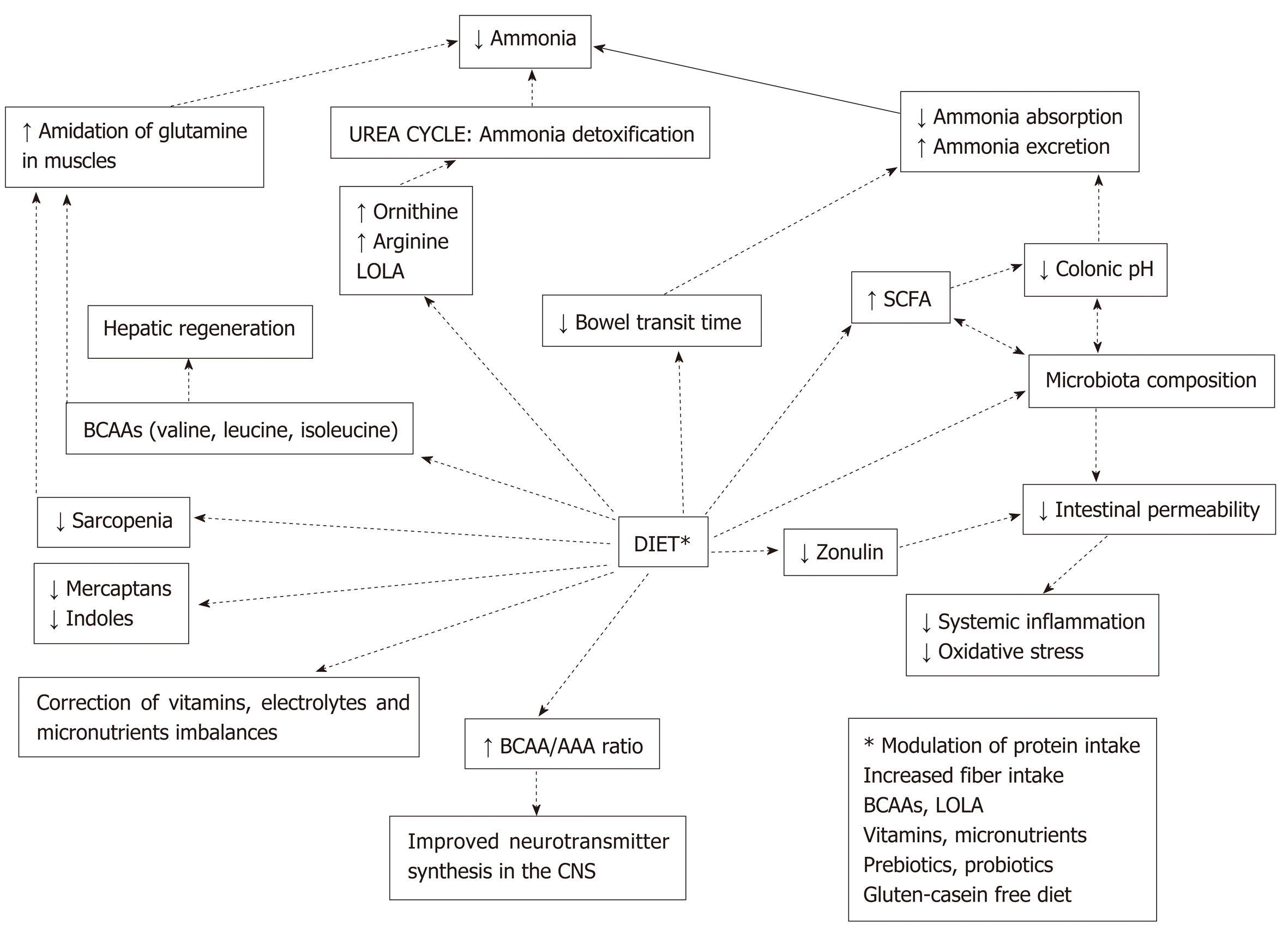Copyright
©The Author(s) 2019.
World J Hepatol. Jun 27, 2019; 11(6): 489-512
Published online Jun 27, 2019. doi: 10.4254/wjh.v11.i6.489
Published online Jun 27, 2019. doi: 10.4254/wjh.v11.i6.489
Figure 1 Multifactorial pathogenesis of hepatic encephalopathy.
The figure summarizes the pathogenetic mechanisms at all levels of the gut-liver-brain axis underlying the development of hepatic encephalopathy. In this context, the interplay between systemic inflammation and hyperammonemia plays a central role (see text for details). CNS: Central nervous system; GABA: Gamma-aminobutyric acid; GI: Gastrointestinal; IL: Interleukin; NH4: Ammonia; NO: Nitric oxide; PAMPs: Pathogen associated molecular patterns; ROS: Reactive oxygen species; SIBO: Small intestine bacterial overgrowth; SIRS: Systemic inflammatory response syndrome; TNF-α: Tumor necrosis factor-alpha.
Figure 2 Leaky gut in liver cirrhosis.
Multiple factors are involved in the increase of intestinal permeability found in cirrhotic patients. SCFA: Short-chain fatty acids.
Figure 3 Potential benefits of dietary modulation in hepatic encephalopathy.
AAA: Aromatic amino acids; BCAA: Branched-chain amino acids; CNS: Central nervous system; LOLA: L-ornithine–L-aspartate; SCFA: Short-chain fatty acids.
- Citation: Campion D, Giovo I, Ponzo P, Saracco GM, Balzola F, Alessandria C. Dietary approach and gut microbiota modulation for chronic hepatic encephalopathy in cirrhosis. World J Hepatol 2019; 11(6): 489-512
- URL: https://www.wjgnet.com/1948-5182/full/v11/i6/489.htm
- DOI: https://dx.doi.org/10.4254/wjh.v11.i6.489











